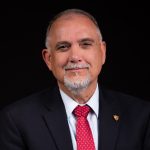I. Life to the dead. – 1-14.
A. God Takes Ezekiel to the
B. God told him to prophesy to the bones – Prophesying to bones seems a strange event, but is the consistent phenomenon in Christian ministry. Christian preachers on a regular basis prophesy to lifeless entities at all different stages of preparedness for life. Always there are some that have no clue concerning the reality of God, his judgment, the nature of divine revelation, the perversity of sin against the Creator, and the provision of redemption in Christ. Preaching brings such utterly, and dangerously, ignorant unbelievers into a form in which more knowledge concerning God and the gospel can be presented.
C. Bones Sinew, and Flesh come together –
Preaching has the effect of putting substance on the form. Hebrews 11:6 indicates that certain pivotal ideas must be present before saving faith can be present. “And without faith it is impossible to please him, for whoever would draw near to God must believe that he exists and that he rewards those who seek him.” In Romans 10:14, Paul asks, “But how are they to call on him in whom they have not believed? And how are they to believe in him of whom they have never heard? And how are they to hear without someone preaching?” Before the Colossians received the gospel in a saving way, they were taught it, they heard it and understood it, and learned it. Some may criticize the Puritans for their doctrine of preparation but Ezekiel was thoroughly impressed with the numbers of events that had to precede the giving of the living breath to such radically fragmented persons.
Each person goes through this process in salvation. The framework of the gospel shapes a person’s mind with truths necessary prior to the exhibition of faith. With some their time of instruction is long and grueling and might involve periods of resistance and resentment and self-righteous indignation. So it did with the Apostle Paul. With others the process is rather quickly done as with Cornelius, the Philippian jailor, Lydia; and with some it is the result of a lifetime of loving training, instruction and admonition as with Timothy, but the pattern set in Ezekiel always is discernible.
This prophecy is applicable to individuals, because any national subordination to the Gospel will involve this individual process multiple times. So, there is a dual idea in mind here; Ezekiel looks both to individual conversion, but does so on a massive scale in which the “whole nation” of
D. God Told Ezekiel to prophesy to the Breath – With the preparation complete in each of the individual cases, now the breath must come. In the process of prophesying again, the breath came from the four winds and these reconstituted corpses lived. “The wind blows where it wishes” (John 3:8) This is one of the views of conversion that Nicodemus should have understood when Jesus told him that he could not see the kingdom of God unless he were born again. When Nicodemus seemed incredulous at the suggestions, Jesus responded “Are you the teacher of
E. The bones are the “whole house” of
God Himself will perform this work just symbolized and from death God will give new life.
God will restore them to the land in a regenerated condition (“I will put my Spirit within you”)
Their knowledge of the God in all of his perfection and power will then be complete, for God Himself will make it certain. Verse 14
II. The Unity of the People – 15-23 Ezekiel is told to enact another parable.
A. He is told to take two sticks and write on them “For Judah” and “For Joseph.”
B. Then he is to join these two sticks into one stick. – The
John 4 records the conversation of Jesus with a woman of
When the Jews wanted to give the ultimate insult to Jesus they said, “Are we not right in saying that you are a Samaritan and have a demon?” (John 8:48). Indeed as Savior of the world and as joining both sticks, he was a Samaritan; he is as much their king as he is King of the Jews.
Jesus illustrated that a Samaritan could have a greater sense of righteousness than the ceremonially strict but hypocritical Jew. In a sense Jesus is saying the in the parable in Luke 10, that he Himself is the Gracious, self-giving Samaritan that binds up our wounds, and pours in healing balm and saves us.
The people of God, the one people, shall, therefore, be those that are redeemed by the one king whether of
This appears to be the argument of Paul in Romans 9 and 11. “For not all who are descended from
C. He will cleanse and purify them and they will not be susceptible to backsliding.
In fulfillment of verse 23, Revelation 21:3 announces “Behold the dwelling place of God is with man. He will dwell with them, and they will be his people, and God himself will be with them as their God.”
Revelation 21:27 pictures the New Jerusalem as a city into which “nothing unclean will ever enter” not anyone that does “what is detestable or false.”
Revelation 22:3 shows his fulfillment again the words, “No longer will there be anything accursed, but the throne of God and of the Lamb will be in it, and his servants will worship him.”
III. The Eternal Reign of David over them. – 24-28
A. Verse 24, 25 – David reigns without rival and with no end. This clearly refers to Jesus who was “descended from David according to the flesh” (Romans 1:3), Peter in the first Christian sermon identified Jesus with that David that would reign forever (Acts 2:29-36). In Revelation 22:16 Jesus identified himself as the “root and descendant of David, the bright morning star.” He is both David’s Lord as well as his descendant.
B. Verse 25 – The land is forever – The men and women of faith in Hebrews 11 did not identify the promise with the land to which Abraham was led. He and Isaac and Jacob were “looking forward to the city that has foundations, whose designer and builder is God.” (11:10). They “were strangers and exiles on the earth” and were looking for a “better country, that is, a heavenly one.” Because of their faith “God is not ashamed to be called their God, for he has prepared for them a city.” (11:13-16). They will be given the “kingdom that cannot be shaken” (Hebrews 12:28).
C. verse 26 – They will live under the provisions of a Covenant of Peace that is everlasting. According to Hebrews 12:22,24, they have come to “Mount Zion and the city of the living God, the heavenly Jerusalem . . . and to Jesus, the mediator of a new covenant, and to the sprinkled blood that speaks a better word than the blood of Abel [that is, better than the blood sacrifice offered by Abel, for such sacrifices could never take away sin but were fulfilled in the atoning, reconciling work of Christ]. Christ’s blood is the covenant of peace [Ephesians 2:14, 15, and Colossians 1:20]
D. God’s dwelling place will be with them – This clearly is not fulfilled until we read the words of Revelation 21:3 – Ezekiel 37:27 “My dwelling place shall be with tem, and I will be their God, and they shall be my people.” Revelation 21:3 – “And I heard a loud voice from the throne saying, ‘Behold, the dwelling place of God is with man. He will dwell with them, and they will be his people, and God himself will be with them as their God.”





















